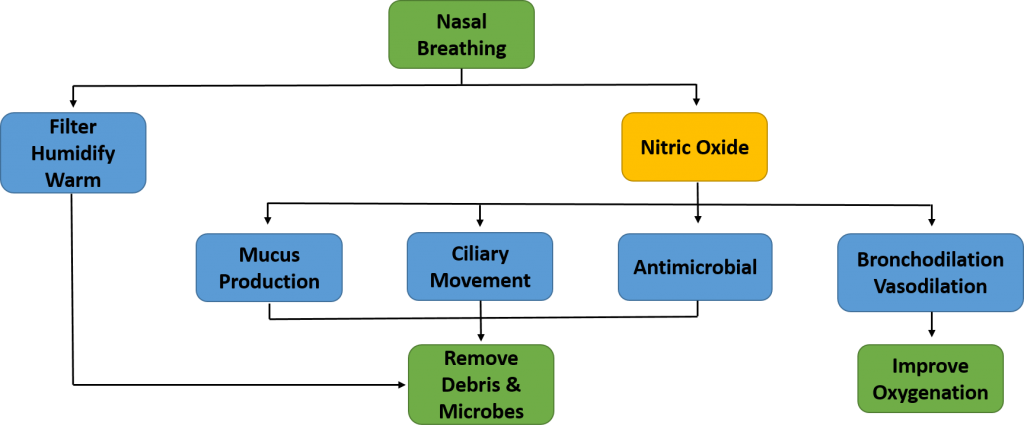Breathe Through Your Nose
- At August 27, 2020
- By Healing In Motion
- In Uncategorized
 0
0
This post is inspired by “Following Your Nose: Nasal Function and Energy” by Rudolph Ballentine (in Science of Breath, 1992).
The nose is the most restricted part of the respiratory tract and creates 150% more work than mouth breathing. So why should we breathe through our noses? Because the nose fulfils several crucial respiratory functions that our mouth is unable to fulfil. As air passes through the nose it’s filtered, humidified (98% humidity) and warmed (32-34 degrees C). This prepares it for passage to the lungs. When we breathe out through the nose, much of the moisture and heat is retained within the nose to be transferred to the next in-breath.
As we breathe deeply through our nose, mechanoreceptors on epithelial cells are activated and this results in the release of nitric oxide. Nitric oxide leads to bronchodilation and vasodilation which in turn increase circulation and the delivery of oxygen. Nitric oxide also has antimicrobial properties and promotes mucus production and ciliary movement which facilitate the evacuation of debris and microbes.
Apparently, the shape of our nose depends on the climate in which our ancestors evolved: a long big nose in cooler and dryer climates and a wide nose with open nostrils in warm, moist climates.




